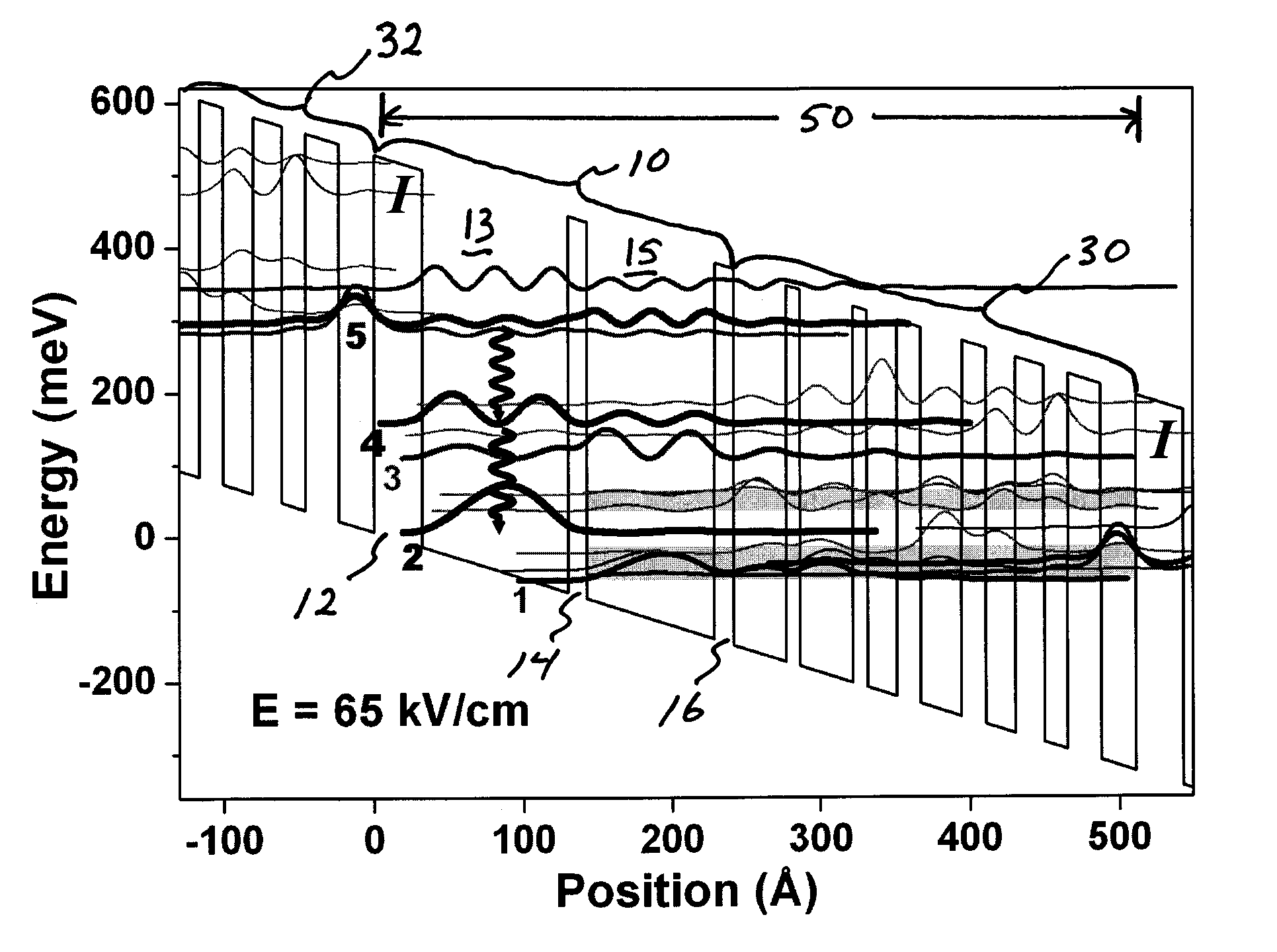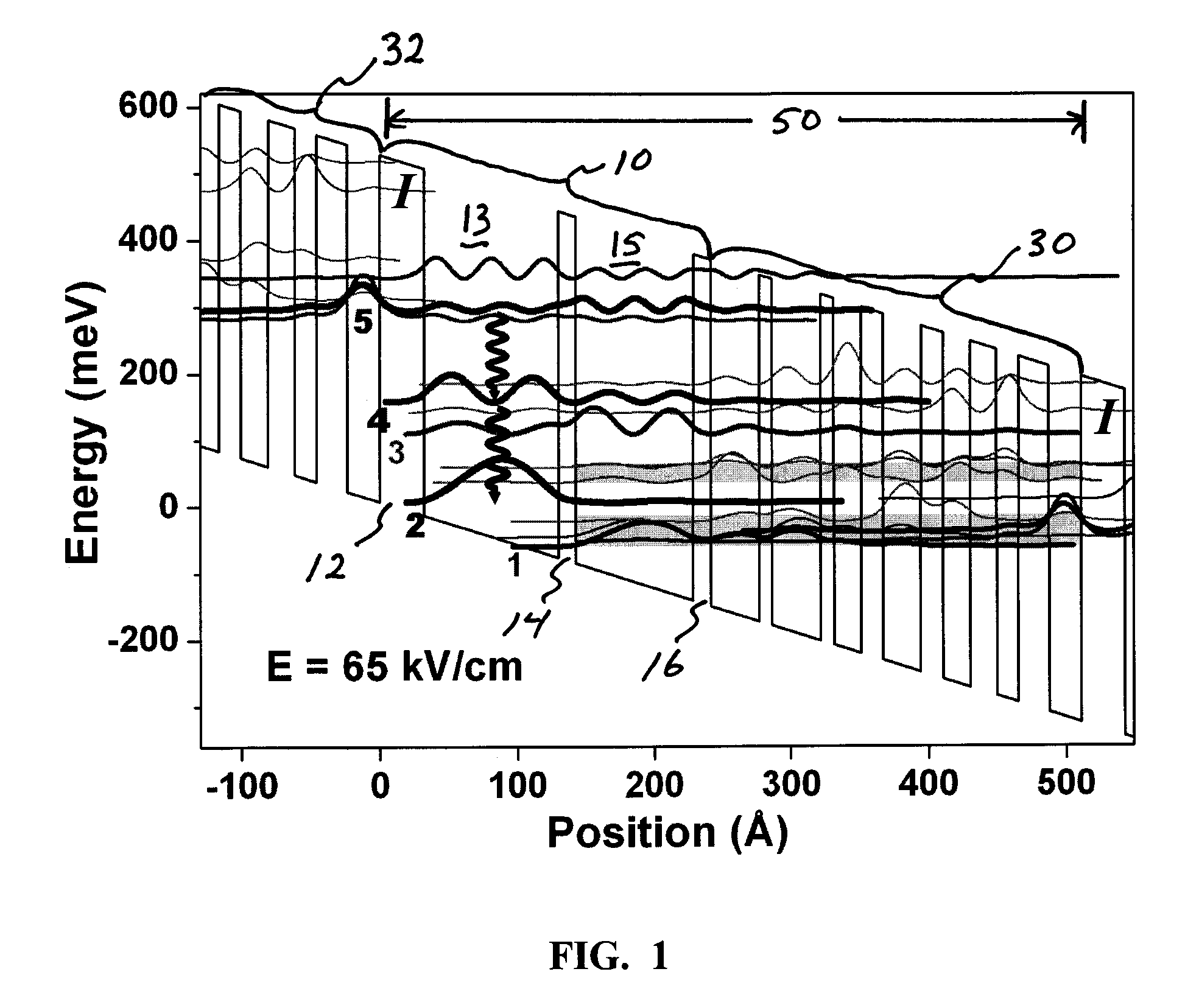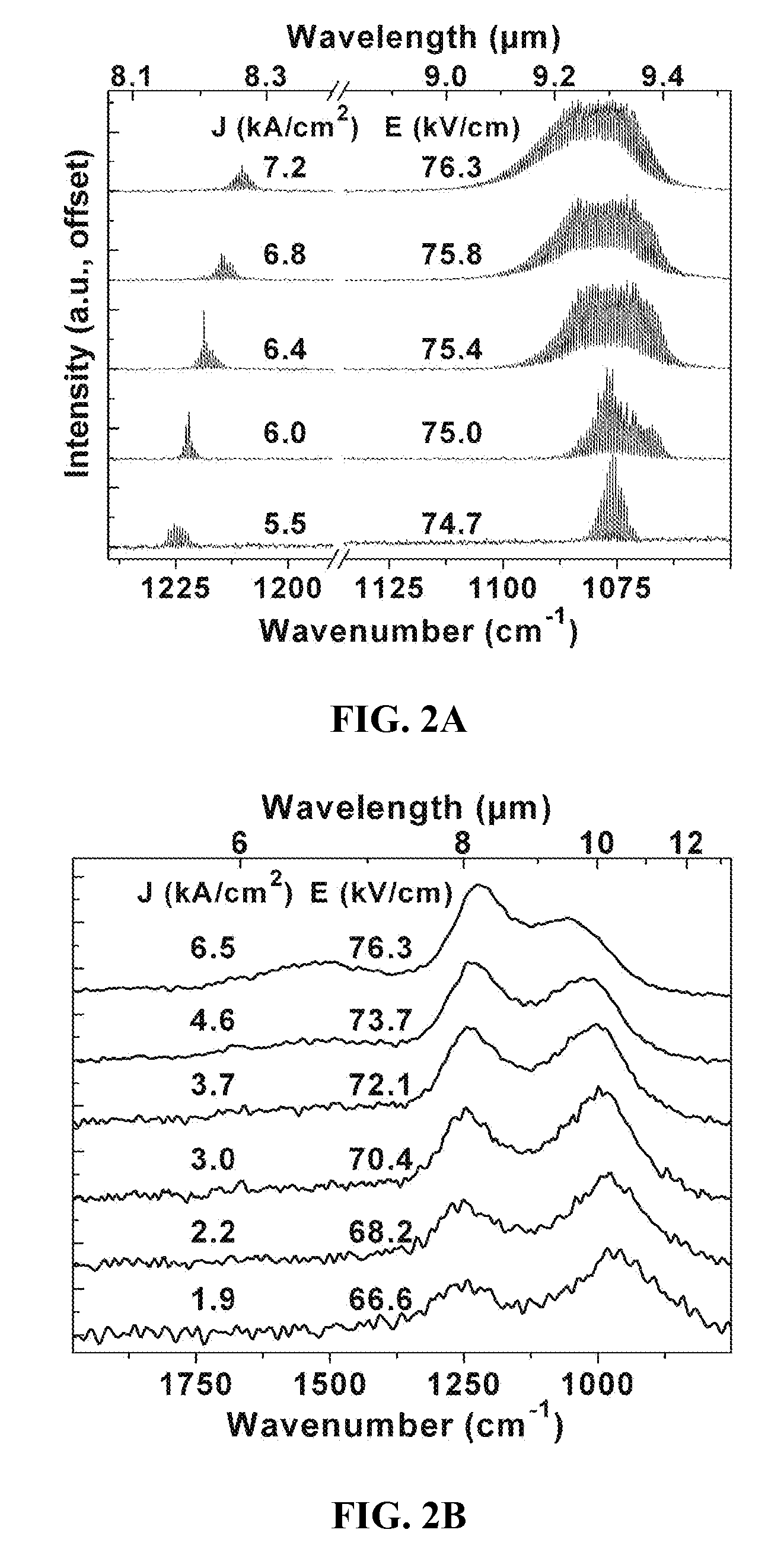Excited state quantum cascade photon source
a quantum cascade and photon source technology, applied in the field of quantum cascade photon source, can solve problems such as inability to achieve the effect of quantum cascad
- Summary
- Abstract
- Description
- Claims
- Application Information
AI Technical Summary
Benefits of technology
Problems solved by technology
Method used
Image
Examples
Embodiment Construction
[0020]Turning first to FIG. 6, concepts common to the embodiments of the present invention described herein are shown illustrating certain advantages provided by QC photon sources, such as QC lasers, in accordance with the present invention. QC lasers of the present invention include at least two quantum wells and utilize at least one lasing transition between two excited states, e.g., the second- and first-excited states, of the constituent quantum well(s) of the active region. Such an excited state architecture comprising a lasing transition between two excited states has the potential for improving QC laser performance in at least two ways. First, the dipole matrix element between consecutive higher-level states is in general larger than between lower-level states, FIG. 6. Second, the wider active region wells that result from the excited state architecture of the present invention reduce the effects of scattering caused by interface roughness.
[0021]The gain coefficient g of a QC...
PUM
 Login to View More
Login to View More Abstract
Description
Claims
Application Information
 Login to View More
Login to View More - R&D
- Intellectual Property
- Life Sciences
- Materials
- Tech Scout
- Unparalleled Data Quality
- Higher Quality Content
- 60% Fewer Hallucinations
Browse by: Latest US Patents, China's latest patents, Technical Efficacy Thesaurus, Application Domain, Technology Topic, Popular Technical Reports.
© 2025 PatSnap. All rights reserved.Legal|Privacy policy|Modern Slavery Act Transparency Statement|Sitemap|About US| Contact US: help@patsnap.com



